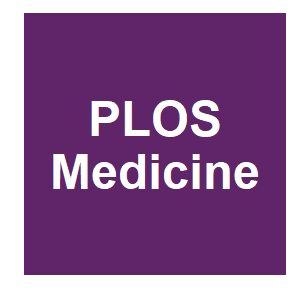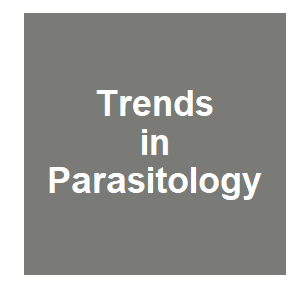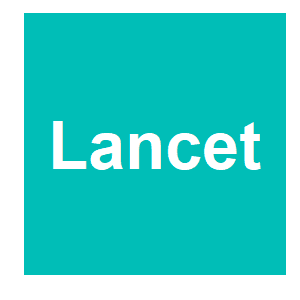Gene Drive Technologies and Public Health Applications
Malaria and Dengue: Challenges
Malaria and Dengue: Challenges
This interactive graphic uses data from the Global Health Data Exchange to partially illustrate the challenges posed by malaria and dengue over the last 30 years. This graphic uses two statistics to tell this story – mortality (deaths) and disability-adjusted-life-years (DALY), a measure of the overall burden of a disease. In this graphic the world is divided into regions according to the World Health Organization (WHO). You can view all of the regions or you can use the ‘filter’ tool to select individual regions. The data are further divided into age groups and years.
You can interact with the graphic by clicking on a portion of the graphic to zoom into the data.
Malaria and Dengue: Trends
Malaria and Dengue: Trends
The trends in mortality of these two mosquito-transmitted diseases over the last 30 years are quite different as shown in the interactive graphics below.
In the case of dengue, there has been a steady increase in the number of deaths due to dengue and this is mirrored by an increase in the number of cases (not shown). As shown in the previous graphic most of the deaths caused by dengue are in the Southeast Asian Region. There are multiple factors that contribute to this trend but one is the continued spread of the mosquitoes Aedes aegypti and Aedes albopictus and the rise of insecticide resistance that makes vector control efforts more difficult.
The trends in the malaria data over the last 30 years are quite different from those seen in the dengue data. Beginning in the early part of the 21st century and coinciding with large concerted efforts to combat and eventually eliminate human malaria, particularly from the African Region, there have been steady gains in reducing the number of deaths from this disease.
But there is a very disturbing trend in the malaria data. Namely, the steady gains seen since the early part of the century have ceased despite sustained resources and efforts being directed at the disease.
Mosquito Control: Critical
Mosquito Control: Critical
The gains achieved in the efforts to reduce and eliminate the burden of malaria are attributable to the development of new drug therapies, notably artemisinin-based combination therapies (ACTs) and, perhaps more significantly, to the development and increased use of insecticide treated bed nets (ITNs) and indoor spraying of residences with insecticides (IRS) to control the mosquito vectors. It has been estimated that some 670 million cases of malaria were averted between 2000 and 2015 from the use of these interventions with approximately %80 attributable to vector control efforts, demonstrating the importance of mosquito control in the current campaign to eliminate malaria (Bhatt et al 2015)

a, Predicted time series of population-weighted mean PfPR2–10 across endemic Africa. The red line shows the actual prediction and the black line a ‘counterfactual’ prediction in a scenario without coverage by ITNs, ACTs or IRS. The coloured regions indicate the relative contribution of each intervention in reducing PfPR2–10 throughout the period. b, The predicted cumulative number of clinical cases averted by interventions at the end of each year, with the specific contribution of each intervention distinguished. Results shown in both panels are derived from a Bayesian geostatistical model fitted to n = 27,573 PfPR survey points; n = 24,868 ITN survey points; n = 96 national survey reports of ACT coverage; n = 688 country-year reports on ITN, ACT and IRS distribution by national programs; and n = 20 environmental and socioeconomic covariate grids. Panel b additionally incorporates data from n = 30 active-case detection studies reporting P. falciparum clinical incidence.
Bhatt, S. et al. The effect of malaria control on Plasmodium falciparum in Africa between 2000 and 2015 Nature 526, 207-211, doi:10.1038/nature15535 (2015).
Figure used with permission of the publisher.

|
The effect of malaria control on Plasmodium falciparum in Africa between 2000 and 2015S. Bhatt, D. J. Weiss, E. Cameron, D. Bisanzio, B. Mappin, U. Dalrymple, K. E. Battle, C. L. Moyes, A. Henry, P. A. Eckhoff, E. A. Wenger, O. Briët, M. A. Penny, T. A. Smith, A. Bennett, J. Yukich, T. P. Eisele, J. T. Griffin, C. A. Fergus, M. Lynch, F. L, Nature, 526:207-211. 2015.
Since the year 2000, a concerted campaign against malaria has led to unprecedented levels of intervention coverage across sub-Saharan Africa. Understanding the effect of this control effort is vital to inform future control planning. H |
Mosquito Control: Failing
Mosquito Control: Failing
The successful use of insecticide treated bed nets and indoor residual spraying with insecticides in bringing down the incidence of malaria in subSaharan Africa may be unsustainable with the widespread and growing appearance of insecticide resistance among the major vectors of human malaria (Ranson et al. 2011; Strode et al. 2014; WHO 2018 ). The increasing prevalence of insecticide resistance and the absence of new effective and acceptable insecticides threatens many mosquito control efforts with failure, the consequences of which could reverse the hard-won gains against malaria.

Insecticide resistance in Africa. Shown are reported resistance of Anopheles gambiae (s.l.) and Anopheles funestus (s.l.) to the pyrethroid class of insecticides which are commonly used in the production of insecticide treated bed nets. The data used here are from 2010-2017, This map was created using the WHO global database on insecticide resistance in malaria vectors and the WHO Threat Map visualization tool.

|
Global report on insecticide resistance in malaria vectors: 2010-2016.WHO, World Health Organization, 2018.
Insecticide-based vector control is a cornerstone in the fight against malaria. Selection of vector-control interventions should take into account the resistance status of local mosquito vectors along with other factors associated with intervention deployment and use such as ... |

|
The Impact of Pyrethroid Resistance on the Efficacy of Insecticide-Treated Bed Nets against African Anopheline Mosquitoes: Systematic Review and Meta-Analysis.C. Strode, S. Donegan, P. Garner, A. A. Enayati and J. Hemingway, PLOS Medicine, 11:e1001619. 2014.
This meta-analysis found that ITNs are more effective than UTNs regardless of resistance. There appears to be a relationship between resistance and the RD for mosquito mortality in laboratory and field studies. However, the substantive heterogeneity in the studies' results and ... |

|
Pyrethroid resistance in African anopheline mosquitoes: what are the implications for malaria control?H. Ranson, R. N’Guessan, J. Lines, N. Moiroux, Z. Nkuni and V. Corbel, Trends in Parasitology, 27:91-98. 2011.
The use of pyrethroid insecticides in malaria vector control has increased dramatically in the past decade through the scale up of insecticide treated net distribution programmes and indoor residual spraying campaigns. Inevitably, the major malaria vectors have developed ... |
Innovations: Critical
Innovations: Critical
A Commission on Malaria Eradication convened by the medical journal Lancet recently considered the feasibility, affordability and worthiness of malaria eradication by 2050 (Feachem et al. 2019). One conclusion the Commission reached was that innovations and new tools will be essential for malaria eradication by 2050. Gene drive technologies were recognized as one of 6 domains of innovation with the potential to contribute significantly to the success of malaria eradication.

Figure 6 Research and development framework for malaria eradication This framework shows innovations according to the probability of successful development (vertical axis), the timeline of availability (horizontal axis), and their relative effect on accelerating eradication efforts (size of coloured circle). Investment opportunities should be prioritised on the basis of the relative size of the coloured circle and its probability of successful development. Product availability is based on prospective registration dates. ACT=artemisinin-based combination therapy. RDT=rapid diagnostic test. u-RDT=ultrasensitive rapid diagnostic test. *These include a Plasmodium falciparum RDT that does not rely on the detection of pfhrp2 and pfhrp3, and a Plasmodium vivax RDT.
Feachem, R. G. A. et al. Malaria eradication within a generation: ambitious, achievable, and necessary. Lancet 394, 1056-1112, doi:10.1016/s0140-6736(19)31139-0 (2019)
Figure used with permission from the publisher

|
Malaria eradication within a generation: ambitious, achievable, and necessaryR. G. A. Feachem, I. Chen, O. Akbari, A. Bertozzi-Villa, S. Bhatt, F. Binka, M. F. Boni, C. Buckee, J. Dieleman, A. Dondorp, A. Eapen, N. Sekhri Feachem, S. Filler, P. Gething, R. Gosling, A. Haakenstad, K. Harvard, A. Hatefi, D. Jamison, K. E. Jones, C., Lancet, 394:1056-1112. 2019.
50 years after a noble but flawed attempt to eradicate malaria in the mid-20th century, the global malaria community is once again seriously considering eradication. Momentum towards eradication has been building for decades, and more than half of the world’s countries are now ... |
Innovation: Gene Drive
Innovation: Gene Drive
Reducing human exposure to parasite- and pathogen-infected mosquitoes is one of the primary goals of public health entomology. The effectiveness of insecticide-treated bed nets (ITNs), the use of insecticides to kill mosquito larvae and adults (IRS), and environmental management that reduces larval breeding sites are all all intended to reduce exposure. Gene drive technologies have the potential to contribute to these vector control efforts in two distinct ways.
1- Reducing mosquito population sizes.
Gene drive technologies and their ability to ‘drive’ genes into mosquito populations even when those genes reduce the fitness of the mosquito enable these technologies to be potentially useful for reducing mosquito population densities. There are two general approaches being explored by researchers for using gene drive technologies to reduce mosquito population densities.
- Use gene drive technologies to ‘drive’ fecundity-reducing traits into populations resulting in female mosquitoes carrying the gene drive producing fewer progeny, leading to a decline in the overall population size.
- Use gene drive technologies to ‘drive’ sex-ratio altering traits into a population resulting in fewer female progeny and a decline in the overall population size.

A gene drive that suppresses a population as it drives through it.
2-Reducing the capability of mosquitoes to harbor and transmit pathogens and parasites. [Raban et al. 2020; Pham et al. 2020; ]

Plasmodium (malaria) parasites go through multiple stages of development after entering a mosquito with the blood of an infected host. The mosquito’s immune system attacks the parasite at various stages during development. Enhancing a mosquito’s natural immunity or augmenting it with novel anti-parasite proteins can result in malaria-free mosquitoes.
Mosquitoes have immune systems that they use to fight parasite (e.g. Plasmodium – malaria) and pathogen (e.g. dengue virus) infections. In the case of malaria parasites, most are killed in the gut of mosquitoes but a few occasionally survive resulting in infectious mosquitoes that are responsible for malaria transmission. Researchers are experimenting with using gene drive technologies to ‘drive’ traits into mosquito populations that enhance the ability of mosquitoes to fight Plasmodium infections.
There are two general approaches being explored by researchers to enhance a mosquito’s anti-Plasmodium responses.
- Use gene drive technologies to ‘drive’ genes expressing anti-parasite proteins into populations resulting in Plasmodium-resistant female mosquitoes.
- Use gene drive technologies to ‘drive’ genes that express proteins that block or otherwise interfere with the complex life cycle of Plasmodium in mosquitoes resulting in Plasmodium-resistant female mosquitoes.

A gene drive spreading a trait-altering gene that does not affect the size of the population but does modify it.



